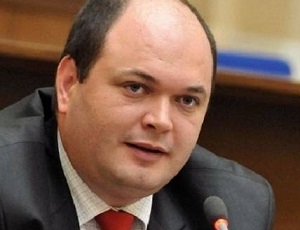 The state expenses on public sector wages will reach 12% of GDP in 2022, which means half of the revenues collected to the state budget, according to the bill on the pay system, said Ionut Dumitru, Chairman of the Fiscal Council. That is unsustainable because there would be no resources left in the budget for almost anything, he added, in a statement for Agerpres.
The state expenses on public sector wages will reach 12% of GDP in 2022, which means half of the revenues collected to the state budget, according to the bill on the pay system, said Ionut Dumitru, Chairman of the Fiscal Council. That is unsustainable because there would be no resources left in the budget for almost anything, he added, in a statement for Agerpres.
„They want a substantial increase in wages from the public sector. Now, their share is 8.4% of GDP, and forecasts show that it will be 10% of GDP in 2020 and 12% in 2022, by far the highest allocation ever made in Romania and above the European average,” he said, referring to the effects of the bill on the unitary pay system presented by Liviu Dragnea.
„Even at an 8.4% of GDP allocation, it means that we allocate 32% of the collected revenue to the wages in the public sector. It would mean that in 2022 almost half of what we collect to go to the wages in the public sector, which would be by far the largest share and something unsustainable and unrealistic because there would be no resources left for almost anything,” explained the Chairman of the Fiscal Council.
In his view, increasing the revenue collection would be even more urgent in this situation – at present, collected revenues represent only 25% of GDP, well below the European average of 40%.
We remind that the current government coalition will submit next week to the Parliament a draft law on the unitary pay in the public system.
The bill has been presented by Liviu Dragnea, whose signature appears on the document, and includes the pay scales to be implemented in 2022.
In 2022, the minimum national wage would be 2,500 lei, according to the draft law. No official has explained the basis for these estimates which implies increasing the minimum national wage from 1,750 lei in 2020 to 2,500 lei in just two years.
According to the bill, doctors and nurses will earn as of 1 January 2018 the salaries that would correspond to 2022, because the coefficients from the wage scale will be calculated for them based on the minimum national wage for 2022.
Again as of 1 January 2018, officials (elected representatives – MPs, mayors, deputy mayors, council presidents and vice presidents of county councils – those appointed to head important institutions), because the coefficients will apply to the minimum national wage in force (1,450 lei now, 1,510 lei next year, 1,750 lei in 2020, etc.)
Teachers and primary school teachers will benefit from a 50% wage increase, again as of next year, after which they will receive an additional quarter of the difference to the value set in the wage scale.
The remaining employees of the public sector will reach the position from the wage scale only in 2022, following gradual annual increases.









